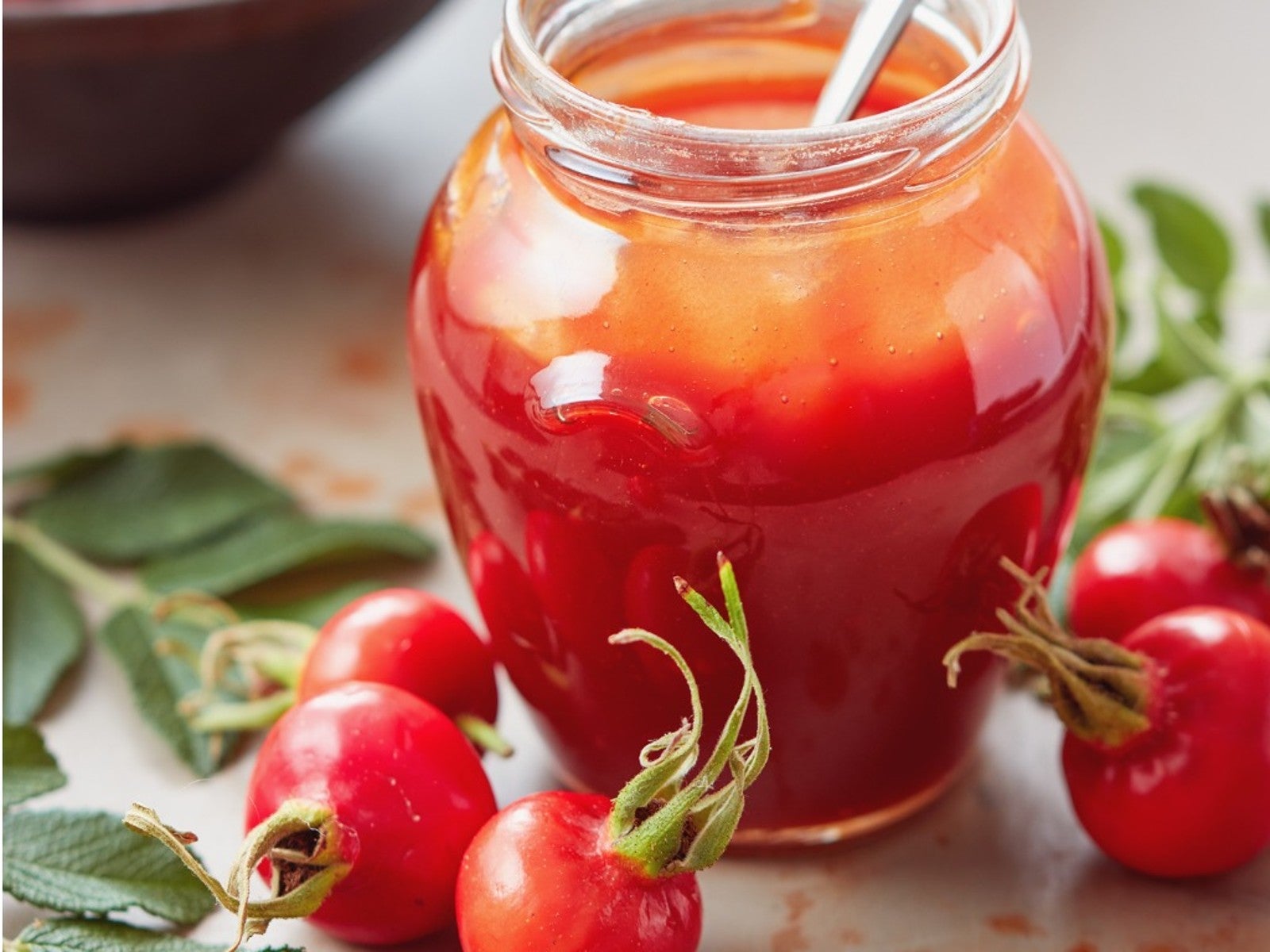What To Do With Rose Hips: How To Harvest Rose Hips For A Tasty Treat
Rose hips are the small round shiny red pods left behind when petals fall from roses. Used for nutritious teas, jams, oils and food for birds, wild roses produce some of the tastiest hips.


Caroline Bloomfield
Try Rose Hips For a Dose of Vitamin C
Once the petals fall from roses, the flower leaves behind the hips. Rose hips are ornamental, especially once they turn a golden orange hue.
Harvesting rose hips for tea is a very common and has a long history steeped in tradition, but you can eat the hips as well.
There are plenty of nutritional rose hips benefits and the lovely taste carries a hint of citrus.
Rose hips form on many of our rose species, but rosa rugosa, or wild rose hips are one of the largest and tastiest.
Wild rose hips have been used for centuries in many recipes. They can be used fresh or dried for later use. High in vitamins and minerals, rose hips add a delightful fragrance and flavor to daily recipes.
About Rosa Rugosa Hips
Rose hips are the ripened ovaries of the rose flower. They are essentially a fruit, and are popular with birds and other wild animals.
Many varieties of roses produce hips that vary in size and color. Wild rose hips are some of the largest and tastiest.
Gardening tips, videos, info and more delivered right to your inbox!
Sign up for the Gardening Know How newsletter today and receive a free copy of our e-book "How to Grow Delicious Tomatoes".
While hybrid roses are repeat bloomers and need to be deadheaded to promote more blooms, wild and shrub roses are not deadheaded and the hips are allowed to develop.
Ripe hips are orange to red, plump, and smooth when ready to harvest. A treat for birds, they are a wonderful food for humans, too. The fruit is tangy, citrusy, and delightful, and may be cooked or dried for different uses.
Rose Hips Benefits
Rose hips are also called rose haw, and are a great source of Vitamin C. Unsurprisingly, the citrus flavor derived from the hips is common in plants high in Vitamin C.
Hips can be preserved, used fresh or dried for tea. Common preparations are jams, jellies, syrup, and purees.
Late season is the best time for harvesting rose hips. Only use fruit that has not been exposed to pesticides or herbicides.
Wash and cut the fruit, then steep in water. This is a simple tea. Or you can add other fruit like apples, and sugar boiled down to a syrup which you can strain. Jams and jellies follow a similar approach to traditional fruit preparations.
Dried Rose Hips
After harvesting rose hips use them fresh or save them for later. Preserving the hips is one option, but they can also be dried.
Wash the hips, then either dry them whole or cut in half. This is best done by spreading the hips on screens, using a dehydrator or drying then in an oven on a very low setting. Make sure they are entirely dry before storing to prevent mold from forming.
You can store the dried hips in this form, or grind them in a mortar and pestle or other device.
Steep the dried hips in a tea ball for instantly fresh, nutritious and tangy tea.

Bonnie Grant is a professional landscaper with a Certification in Urban Gardening. She has been gardening and writing for 15 years. A former professional chef, she has a passion for edible landscaping.
- Caroline BloomfieldManager of Marketing Communications
-
 What Is A Pollinator Garden? Grow Gorgeous Blooms While Benefiting Your Local Ecosystem
What Is A Pollinator Garden? Grow Gorgeous Blooms While Benefiting Your Local EcosystemPollinator gardens look great and also provide a diverse ecosystem that benefits your local pollinating insects and animals. Get started today with this guide!
By Bonnie L. Grant
-
 5 Tough Urban Trees That Thrive In Cities – Top Picks For Urban & Suburban Landscapes
5 Tough Urban Trees That Thrive In Cities – Top Picks For Urban & Suburban LandscapesExplore the best urban trees that will add value to even the most challenging of landscapes. Get growing with these ideas and enjoy all the benefits of trees.
By Teo Spengler